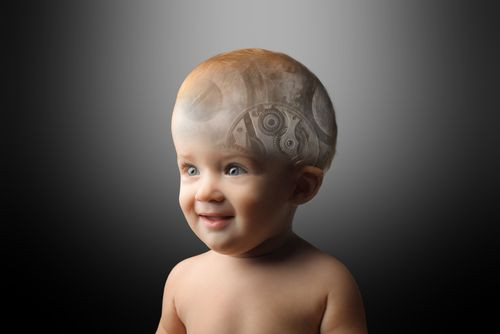Stress Response In Pre-Natal Brain May Explain Why Certain People Are Prone To Psychiatric Disorders

Past studies have shown that when an expecting mother exposes herself to alcohol or drug abuse, or she experiences some trauma or illness, her baby may later develop a psychiatric disorder, including some forms of autism and post-traumatic stress disorder, later in life. Unfortunately, researchers have never understood exactly how this works. Now, a new study from Yale University researchers identifies a molecular mechanism in the prenatal brain that may help explain how cells go awry when exposed to certain environmental conditions.
“It appears that different types of environmental stressors can trigger the same condition if they occur at the same period of prenatal development,” said Dr. Pasko Rakic, senior author of the study. “Conversely, the same environmental stressor may cause different pathologies, if it occurs at different times during pregnancy.”
Using mice, the researchers found that embryos activate a single gene — HSF1 or heat shock factor — in developing brain cells when they are exposed to alcohol, methyl-mercury, or maternal seizures. This gene protects and enables brain cells to survive prenatal assaults. Specifically, HSF1 coordinates a genome wide-transcriptional program known as the heat-shock response. To enhance cell survival under stress, this program effectively restores the normal environment by altering signal pathways and modulating metabolism. Mice lacking the HSF1 gene, for instance, show structural brain abnormalities and are prone to seizures after birth, even when exposed to very low levels of toxins.
Unfortunately, in the mice where the HSF1 gene is properly activated to combat environmental insults, the beneficial effects of survival under stress may come at a price. Activation and subsequent de-activation of the HSF1 program involves a multi-faceted cascade of chemical and molecular activity, and based on observations made during this study, the researchers hypothesize that triggering this elaborate molecular mechanism permanently changes how brains cells respond, and this may be part of the reason why an individual may be more susceptible to neuropsychiatric disorders later in life. In fact, when the researchers created stem cells from biopsies of individuals diagnosed with schizophrenia, they discovered that genes from these schizophrenic stem cells responded more dramatically when exposed to environmental factors than the stem cells obtained from non-schizophrenic individuals.
Since HSF1 activation may permanently mark stressed or damaged brain cells, the researchers believe identifying these cells in adults might be one way of understanding the origin of psychiatric disorders. Possibly, greater understanding of the HSF1 process might also lead to research into new ways of protecting vulnerable cells.
Source: Hashimoto-Torii K, Rakic P. Roles of Heat Shock Factor 1 in Neuronal Response to Fetal Environmental Risks and Its Relevance to Brain Disorders. Neuron. 2014.
Published by Medicaldaily.com



























